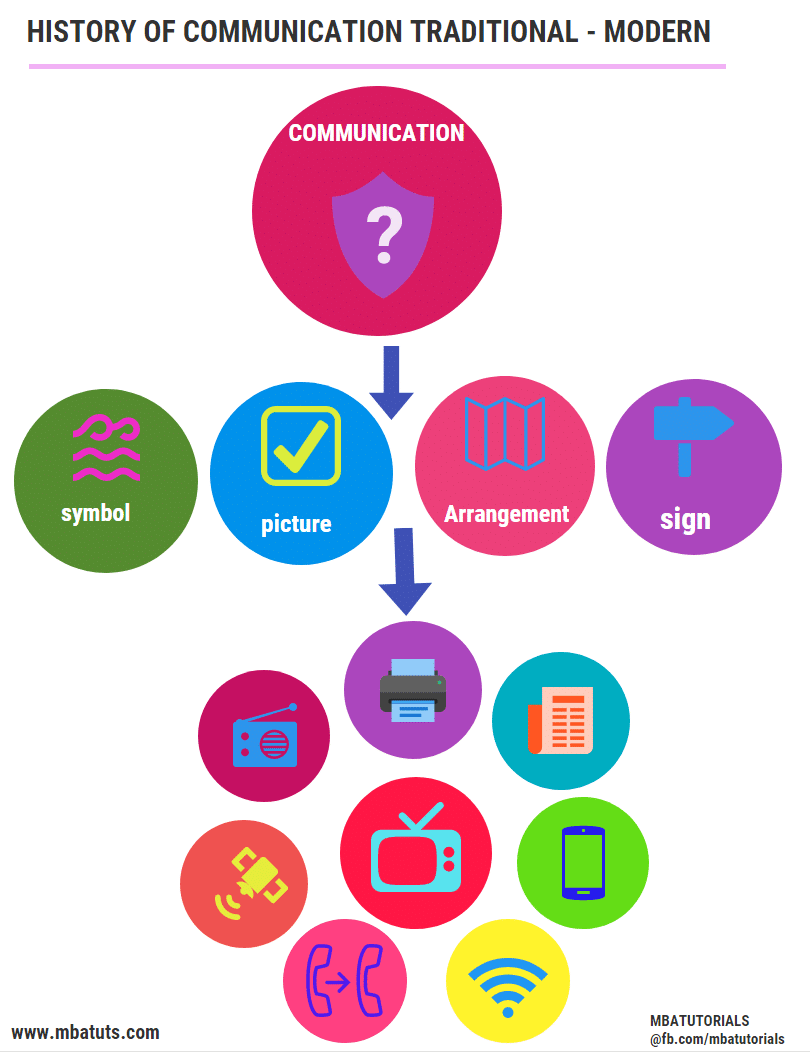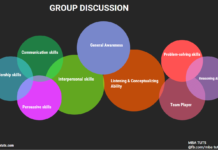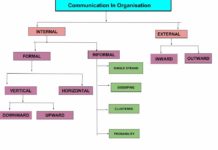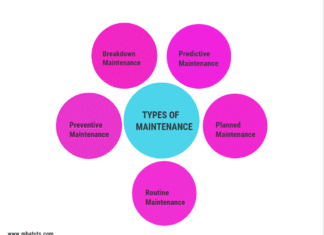History of Communication Traditional to Modern
Communication is an important factor in the development of mankind. Our, ancestors use to talk about pictures, signs & arrangements, signs & symbols. Thus by using all the tools, they tried to share what they know they are experienced, ideas, thoughts, feeling, etc.
Thus in the phases of development human beings have more innovative & easy tools for communication. In the beginning, the information used to be transferred from one generation to another. all information they used to recite. After this language came into existence & slowly words & alphabets came which were used to write information about god, culture, etc on the leave & trunk of the tree. This was an achievement in the area of communication
In 1455 men develop printing techniques, In 1834 newspapers were the mode of communication. In 1880 telegram was introduced, In 1876 the telephone was invented. Later radio, Television, Satellite communication, Mobile, Electronic network, E-commerce, and M-commerce came into the world
The reason behind all the inventions of equipment, and technology was the urge for easy & quick communication. Thus communication became a must in day-day life. This is the fourth basic need of mankind.
As industries are continuously growing business operations are becoming more & wider. Communication plays a very important role in the organization. No business can survive without Communication because every decision requires an
updated & Current knowledge which is only possible through communication between Employer-Employee, Manager-Employee, and Employees-employees.
Communication in the early and middle ages:
The early and middle ages actually started in 1100 AD and ended in 1399 AD. These ages began with the invention of stitched books by the Chinese in about 1116 AD. In 1200 AD, the letter system was brought to life. It was used in the European monasteries for communication. At the same time, the University of Paris started a messenger service to transport mail and messages from one place to another. About 50 years later, Koreans started the metal type. In 1300 AD, the wooden type was established in Central Asia. At the end of these ages, the Koreans started producing Bronze characters which were found easy and nice to deal with. In a conclusion, we see that nothing really important was invented during this age except for the ideas concerning printing and the use of metal characters which led to the birth of the typing machine a few decades later.
Communication in the late middle ages
The late middle ages started in 1400 AD and ended in 1599 AD. At the beginning of this age, the Europeans started the method of block printing which was first founded by the Chinese. At the same time, a few newsletters were circulating in European countries which were very similar to the daily newspapers.
In 1455 AD, one of the biggest inventions of all time was created, which is the printing press. The history of the printing press dates back to the 1400s when Johannes Guttenberg created a model based on primitive versions already in use. His printing press used removable metal letters that could be rearranged to create blocks of text. Before that, people had to pen texts by hand, which was an extremely laborious process.
In 1560 AD, private postal systems grew in Europe. Five years later, the pencil was invented9. The middle ages ended with the invention of the pencil. These ages witnessed one of the most important inventions ever: the typing machine. And in these pages, the ideas concerning postal services and mail were used for the first time.
Communication in the Age of Enlightenment:
The age of Enlightenment started in 1600 AD and ended in 1799 AD. At the beginning of the age, exactly in 1609, the very first newspaper was published in Germany. Registered mail appeared for the first time ever in France in 1627. And in 1650, the first daily newspaper appeared in Leipzig, Germany.
Three years later, in 1653, mailboxes were established in Persia which was a great jump in the history of email and postal services. These mailboxes organized the job and made it a lot easier. After two decades, the postal network started expanding. In 1696, the existence of paper mills in England increased, and the number of these paper mills approached 100. In 1704, Ads started taking their place as a helpful method of communication throughout the newspapers in Boston.
Six years later, a German inventor developed the three-color paintings which depended on the three basic colors red, blue, and yellow. In 1790, the most important invention in the whole era was found, was the hydraulic press which was invented in England. It took the lead towards the development of press centers so that they could depend on mechanical power rather than manual power. Four years later, the first letter carriers appeared in America.
In 1794, signaling systems were found. They connected both Paris and Lille in France. At the end of this age, Robert (a French inventor), fabricated the papermaking machine which made the process of manufacturing paper a lot easier. The Enlightenment age ended after the invention of the papermaking machine. This age carried with it a lot of new inventions and discoveries in the history of communication devices such as the hydraulic systems, the new press centers, the papermaking machine, and the invention of colored printing which makes this age the most effective one not on the history of communication devices only, but in the history of all mankind.



















